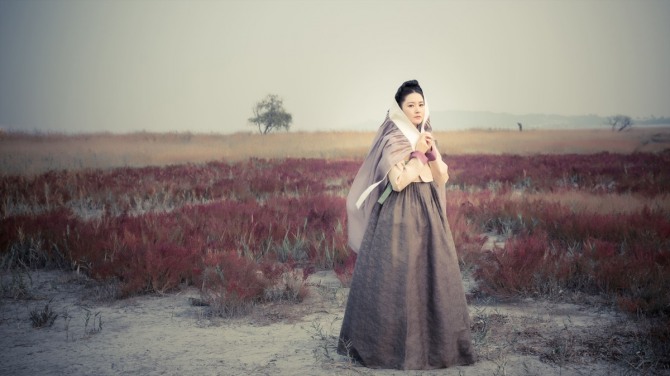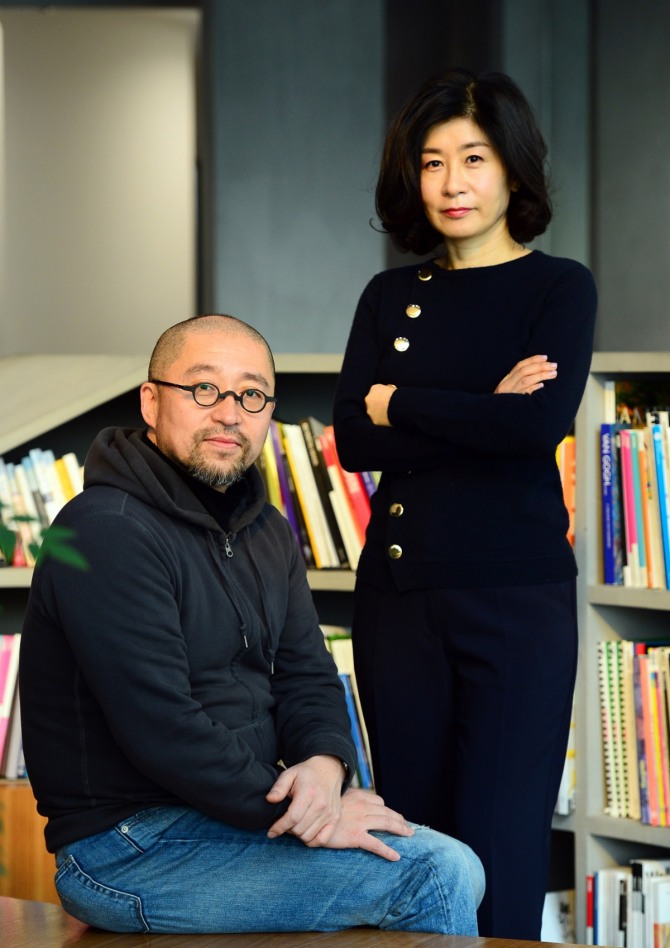Home > Feature
Long-awaited ‘Saimdang’ to air first in Korea
With Chinese government’s review for broadcast still pending, financial success of 30-part series at risk
 |
| Lee Young-ae stars in the upcoming drama series “Saimdang, Memoir of Colors.” (SBS) |
Speaking to reporters Tuesday, the show‘s writer and director said that the goal of airing the series simultaneously in China has been thwarted.
Since August, Beijing has reportedly been banning Korean actors from starring in Chinese productions and restricting the import of Korean content, moves allegedly arising from diplomatic tension between the two countries.
“Saimdang,” originally planned to air in Korea and China in November, has been affected as well. The show has yet to be approved for broadcast in China, and will air only in Korea for the time being, said director Yoon Sang-ho during a press conference held at SBS headquarters in Mok-dong, Seoul.
 |
| Director Yoon Sang-ho (left) and writer Park Eun-ryeong pose for a photo before a news conference for the upcoming drama series “Saimdang, Memoir of Colors” at the SBS headquarters in Mok-dong, Seoul on Tuesday. (SBS) |
“China still hasn’t announced the results of the review of ‘Saimdang.’ It would be great if China agrees to the show’s airing and allow it to air there simultaneously, but we haven’t gotten a response yet.”
Starring actress Lee Young-ae, who returns to the screen 12 years after rising to international fame through 2003 series “Dae Jang Geum,” “Saimdang” has received much attention since its early filming stages.
The series is produced by Creative Leaders Group Eight, known for such hit Hallyu dramas as “Boys Over Flowers” and “Princess Hours.”
“Saimdang” was produced at a cost of 21.6 billion won ($18.5 million) and its Chinese rights were sold to the Hong Kong-based Emperor Entertainment Korea for $267,000 per episode, surpassing the previous record set by the 2015 smash hit drama series “Descendants of the Sun,” which sold at $250,000 per episode. Rights have also been sold to US-based Netflix for $20,000 per episode, and in Japan for $90,000 per episode.
Last March, market watchers estimated up to 34.7 billion won in sales of merchandise and products placed in the show, and profits of some 13.1 billion won. Many expected the show would follow in the steps of “Dae Jang-geum,” which reportedly reached up to 90 percent viewership in Iran and 99 percent in Sri Lanka. The impact of “Dae Jang-geum” on the Korean economy was estimated at 111.9 billion won.
Distribution rights to “Saimdang” have reportedly been bought by companies in China, Hong Kong, Japan, Singapore, Malaysia, Indonesia and Thailand.
‘Original working mom’
The series centers on the life and love of Joseon-era artist and poet Shin Saimdang (1504-1551). Though traditionally hailed as an icon of a good, wise wife and mother, scriptwriter Park Eun-ryeong said she discovered evidence of a more progressive woman during her research.
“She was not primarily known as a ‘good mother’ then, but as an artist, in particular as a prominent landscape painter. That image (of motherhood) was created after the 18 century with the rise of neo-Confucian values.”
Park said she wanted to explore the different aspects of Shin as a woman.
“A working mom and an artist, raising seven children ... trying to realize her art and take charge of running the household. I imagined there would be a lot of emotions brimming underneath.”
“Saimdang” finished shooting last May and has been awaiting release ever since. It was shot entirely in advance, unusual for Korean dramas, where the norm is to shoot episodes as the show is airing.
Yoon trumpeted the advantages of completing production ahead of a series’ launch and urged producers to invest in the process.
“It allowed us to plan out the story’s larger picture, and materialize that story in a more stable setting,” he said.
“We were able to focus on the quality of the series. It was not a set where people were up all night filming and editing. Not all of the budget went into making fancy scenes, but it was used in a reasonable way to allow the staff to work in a truly healthy environment.”
By Rumy Doo (doo@heraldcorp.com)




























